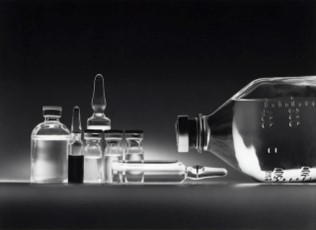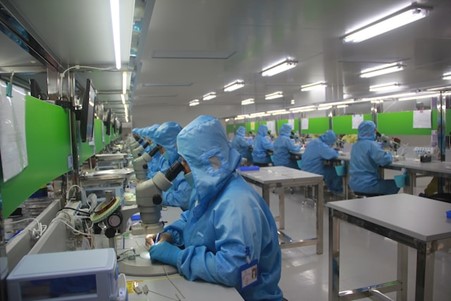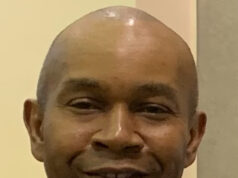Richard Hansen Dean, formerly of Auburn University taught as an associate a professor of pharmaceutical outcomes, has researched population benefits and risks of drug treatments, and has done extensive work in the comparative effectiveness research of drug safety. In the following article, Rick Hansen explains the industry’s role in pharmaceutical safety measures in America, and why these practices are vital for the health and safety of all Americans.
Experts and the general public alike have been calling for enhanced drug safety for years in the United States of America. But despite the pleas, multiple events throughout recent history have only highlighted the obvious (and potentially widening) gap among physicians, patients, regulators, and manufacturers says Richard Hansen Dean.
However, pharmaceutical industry representatives were given a chance to say their piece while the Institute of Medicine published the report on America’s drug safety future. Rick Hansen says the unique perspective garnered from industry professionals provides vital context to the issues at hand.
The Industry Representatives
To gain a greater insight into the overall role of the pharmaceutical industry and its job in improving the US drug safety system, individuals from a myriad of organizations gave their opinion, including:
- Individual pharmaceutical companies
- Large industry trade associations
- Biotechnology Industry Association (BIO)
- Pharmaceutical Researchers and Manufacturers of America (PhRMA)
The Pharmaceutical Industry’s Main Safety Management Roles
Richard Hansen explains that the consolidated opinions showcased the pharmaceutical industry’s two key roles in managing the safety of medicines, alongside other fundamental considerations.
The two major roles are:
- to collect, investigate, and evaluate information regarding the side effects of medicines through clinical trials; and
- to monitor health outcomes and report proactively and thoroughly to the US Food and Drug Administration (FDA) all evidence of “adverse events” or negative side effects experienced by some patients once the medication is available to the general population.
That outlines the pharmaceutical industry as a whole and its management of drug safety. However, the results of the report suggest that manufacturers play a critical role in the continued protection of public health. Therefore, Rick Hansen says they need to start considering themselves as such to keep developing safe and effective products.
Moreover, Richard Hansen Dean explains that pharmaceutical manufacturers should:
- take care of corporate safety functions away from marketing functions.
offer oversight from a senior medical executive. - actively engage in epidemiological research, risk identification, risk assessment, and risk communication.
- formulate and maintain an internal, interdisciplinary, and senior safety council.
 The Never-ending Safety Monitoring Cycle
The Never-ending Safety Monitoring Cycle
Safety monitoring medicines is a dynamic, continuous process that happens throughout all stages of a drug’s lifecycle according to Richard Hansen Dean.
While in development, it’s investigated in stages. Once it hits pre-clinical studies, they begin looking for the safest dose for humans. In the clinical portion, phase one studies estimate the tolerability of the dose range in healthy volunteers, phase two studies focus on the appropriate dose for patients with a particular disease or illness, and phase three studies refine the benefit-risk profile and identify rarer side effects.
Richard Hansen states that the process is rigorous. However, pre-marketing clinical trials come with limitations. In other words, they cannot exhaustively assess the safety profile of any drug.
Clinical trials are conducted on limited patient numbers selected depending on stringent criteria. Thus, they fail to represent America’s diverse population.
On top of that, trials have restricted timeframes, potentially failing to recognize long-term or rare adverse reactions.
The Ever-Evolving Discipline of Pharmacovigilance
So, enter the always-changing practice of pharmacovigilance — the process of identifying and responding to drug safety.
Rick Hansen explains that the ultimate aim of pharmacovigilance since the discipline was given its own subsection within the pharmaceutical industry is to protect people from unnecessary harm by discovering otherwise-unrecognized drug hazards, refuting false safety signs, and quantifying the risk-benefit profile.
However, there are near-future challenges (and some the industry has already faced), making it vital for the practice to evolve and grow.
Firstly, the coronavirus pandemic underscored the importance of good risk communication during emergencies.
Secondly, advanced methodologies like machine learning and electronic healthcare information offer new and exciting opportunities to optimize drug benefit-risk profiles in real-world settings.
Finally, new-age therapeutics (e.g., advanced therapy medicinal products, vaccines created based on cutting-edge tech, and digital therapeutics) have fast-tracked the importance of special pharmacovigilance monitoring says Richard Hansen Dean.
The Sub-Sub-Section: Ecopharmacovigilance
These days, the pharmaceutical industry’s role in improving the US drug safety system also includes ecopharmacovigilance — the practice of detecting, assessing, understanding, and preventing adverse reactions related to pharmaceuticals in the environment which could affect both humans and animals.
It plays a key role in minimizing pharmaceutical pollutants’ environmental risks. And as time continues, this sub-sub-discipline will continue to grow in importance according to Richard Hansen.
We Should Be Aggressive and Accountable with Drug Safety
As the public and other representatives continue to demand increasingly more information and accountability, the pharmaceutical industry must continue to be aggressive about drug safety in the United States of America reports Richard Hansen Dean.
Corporations within the industry are presented with optimal chances to eradicate unhelpful perceptions of profit over safety to prioritize public health.











